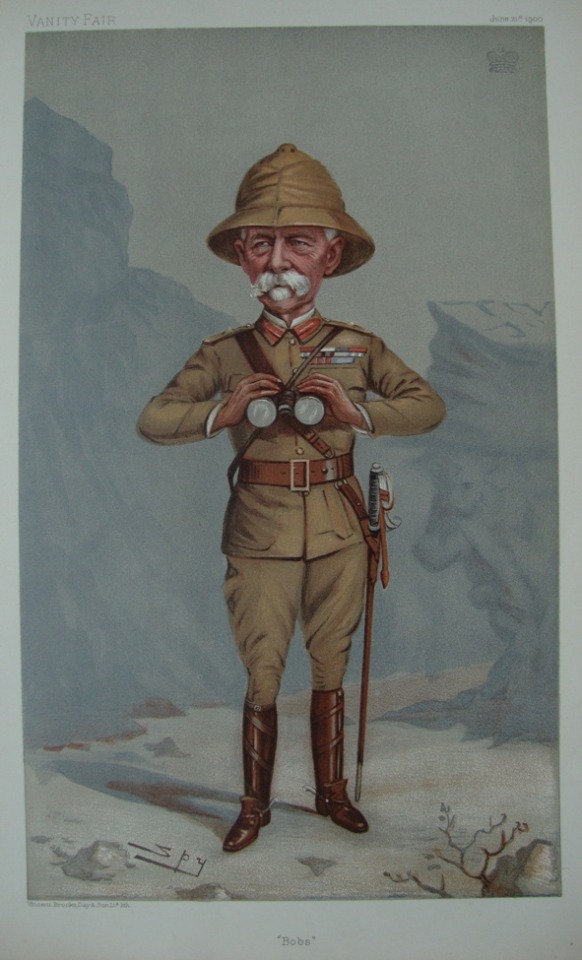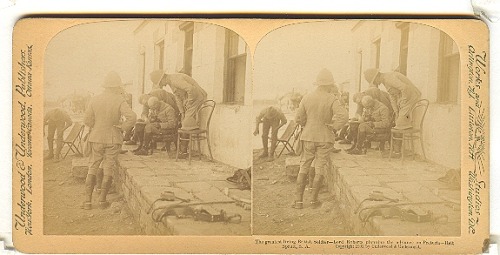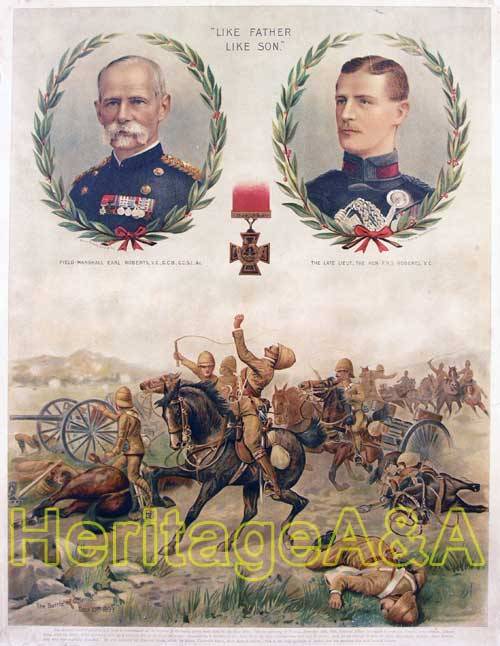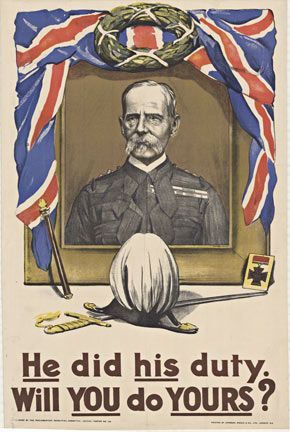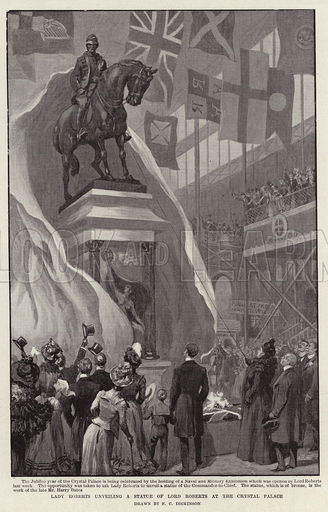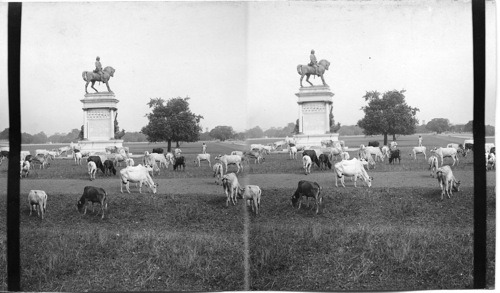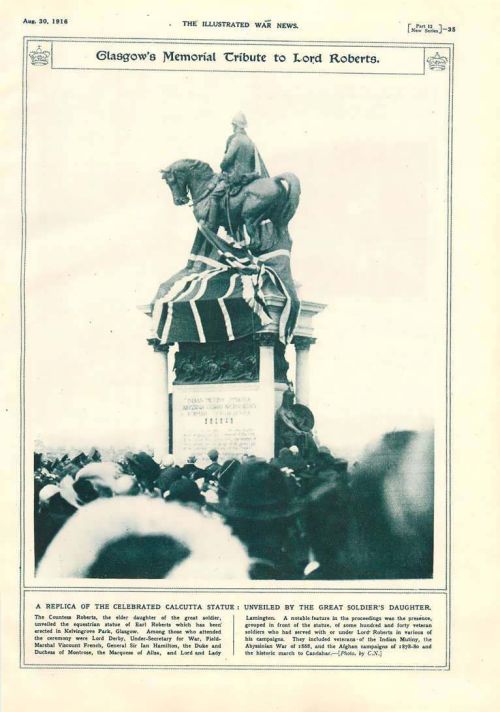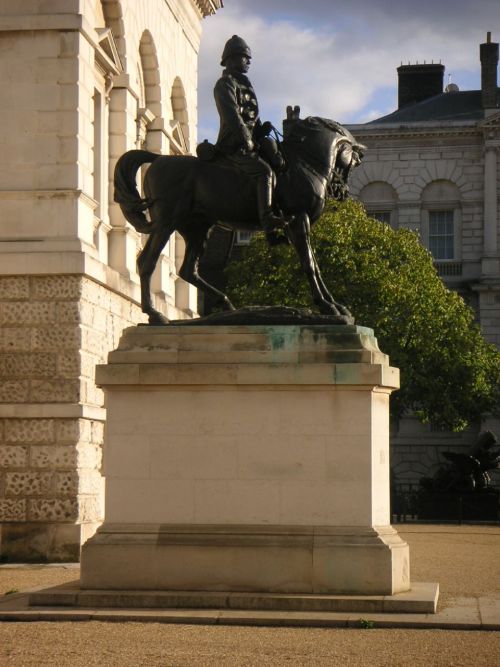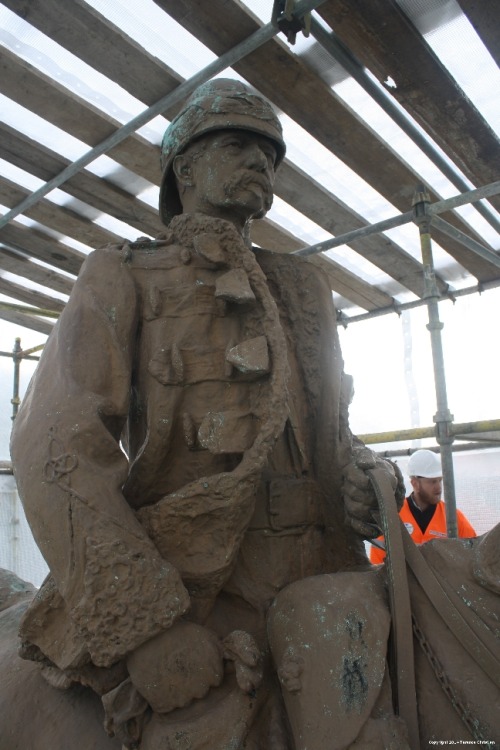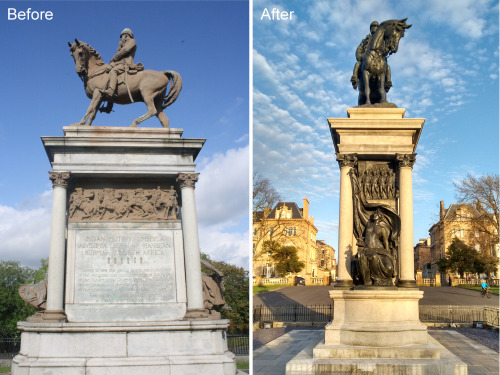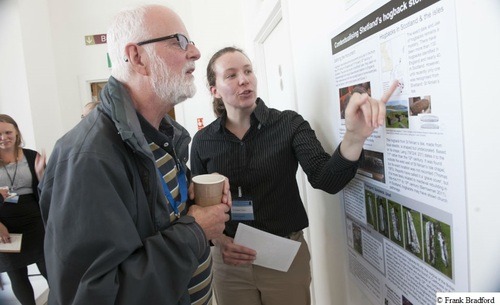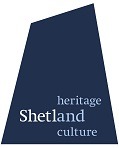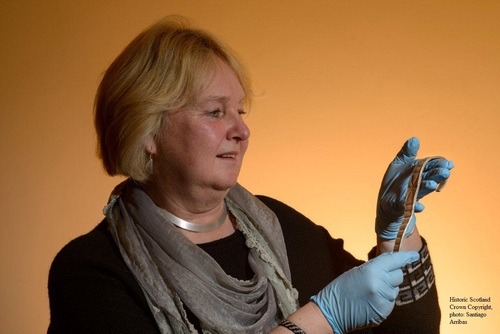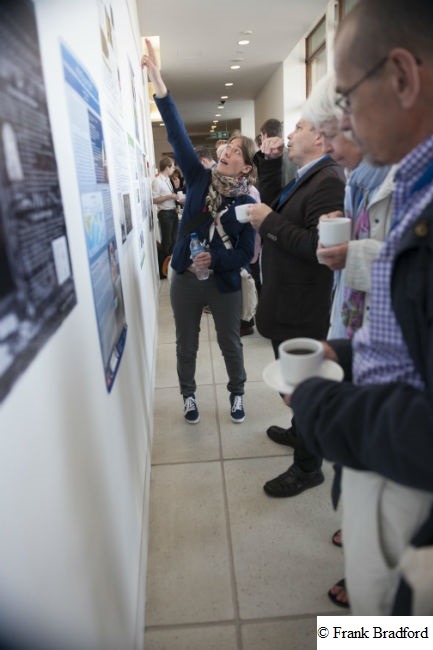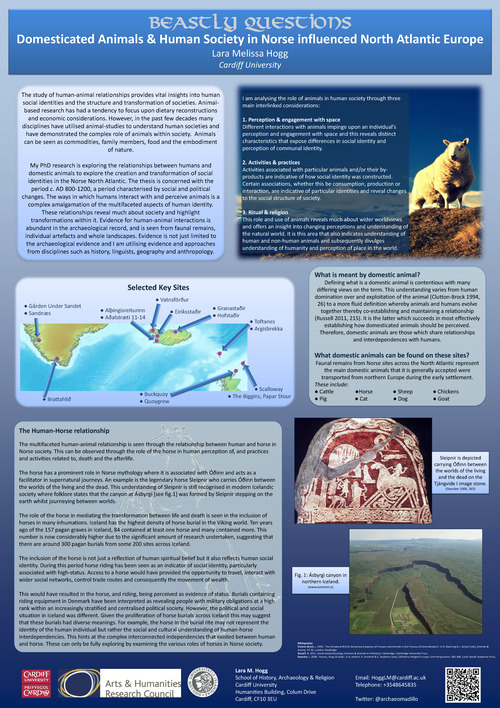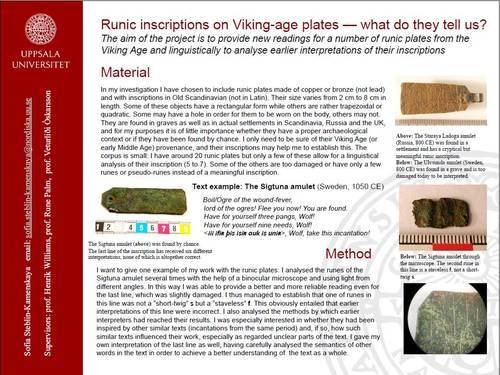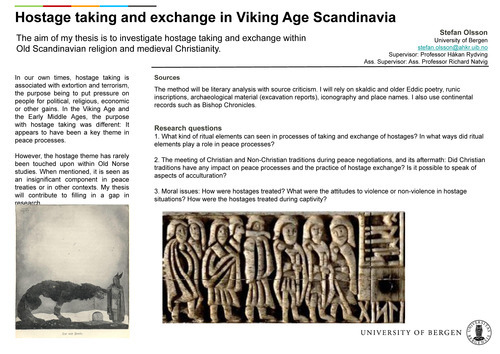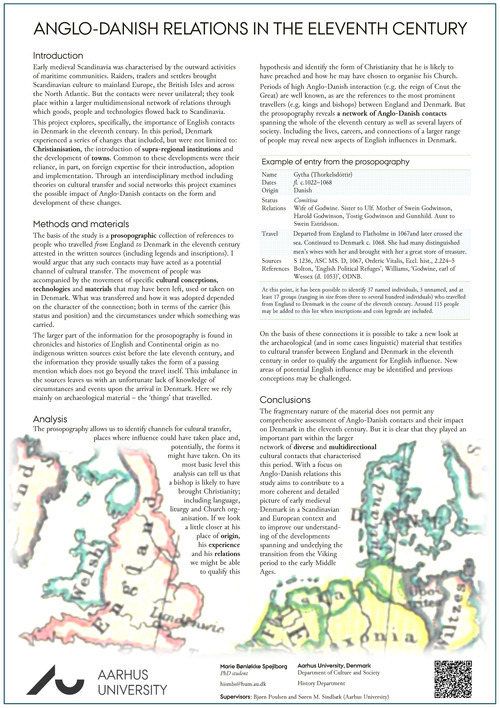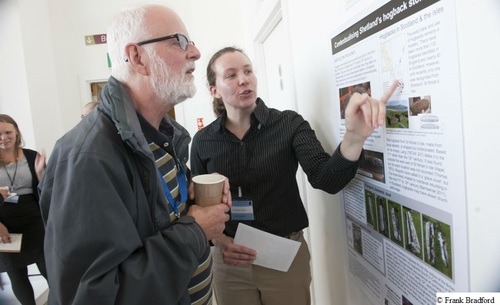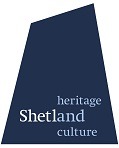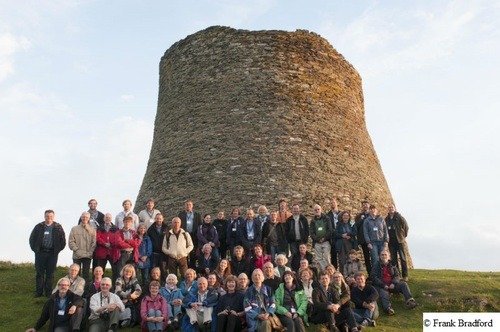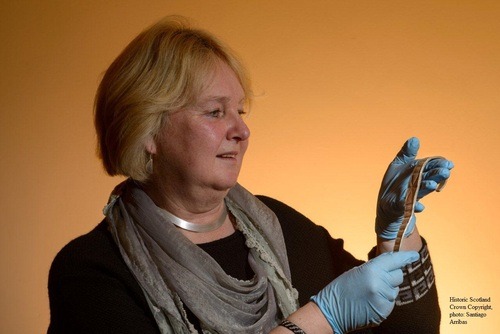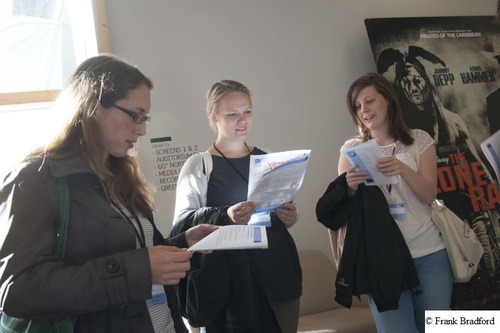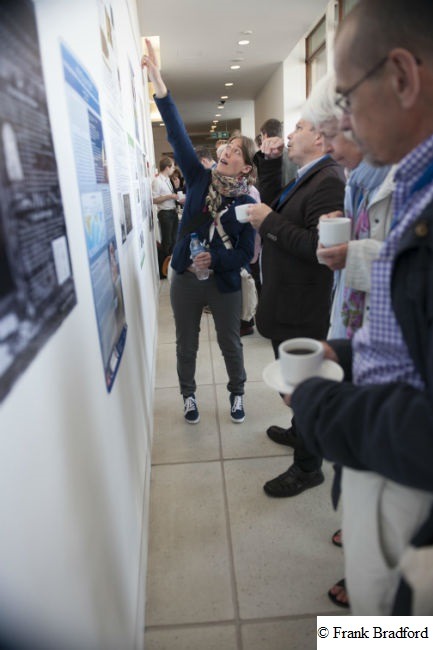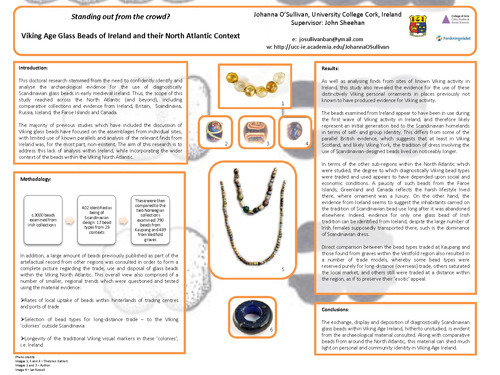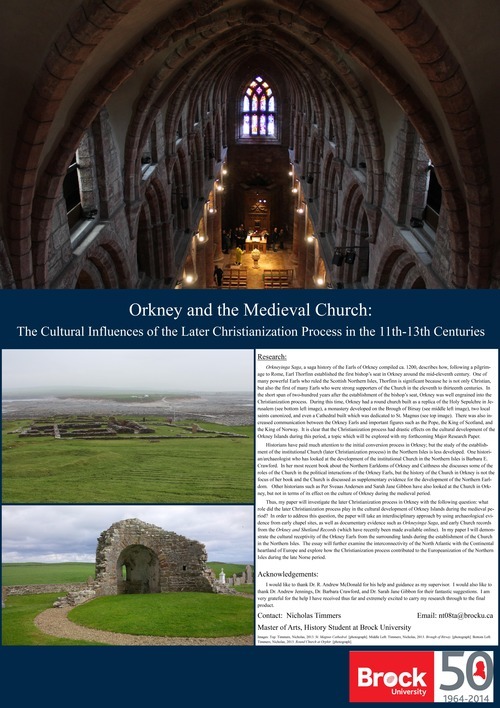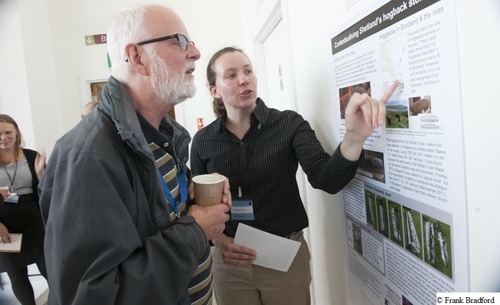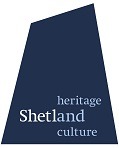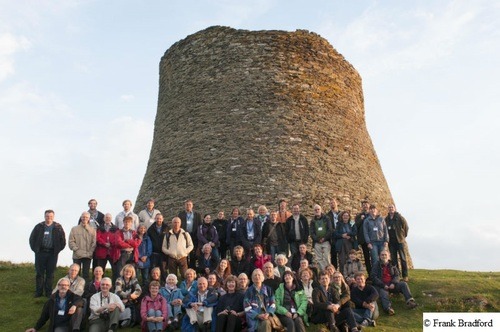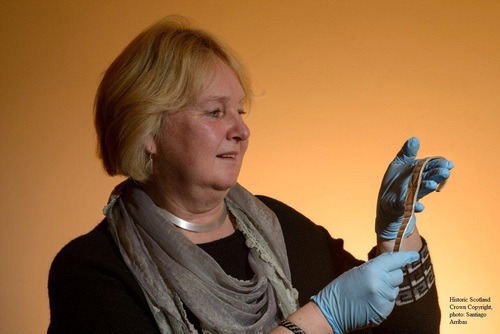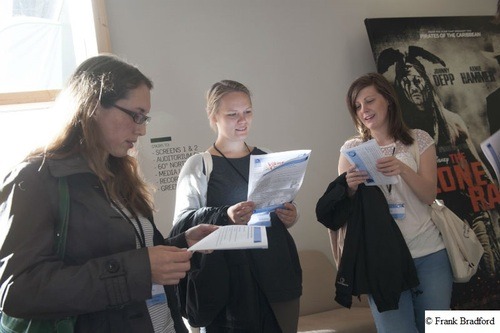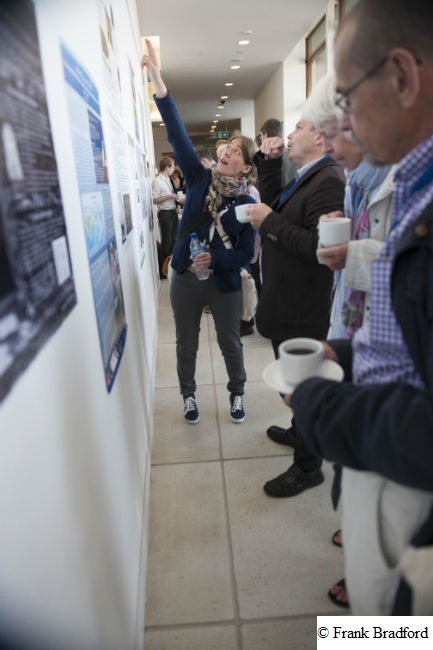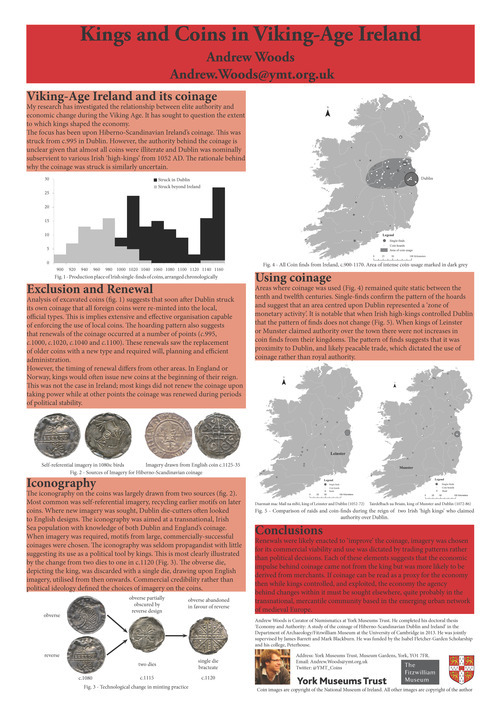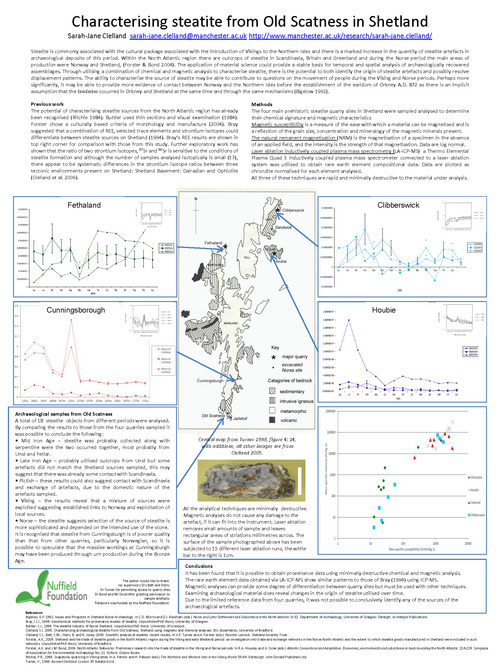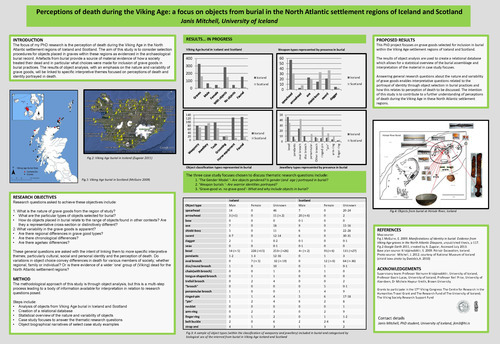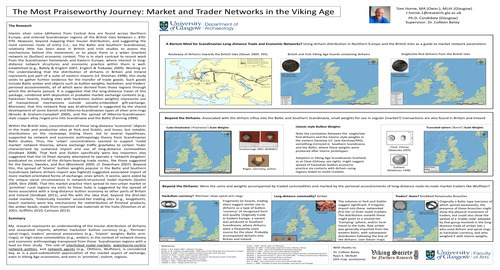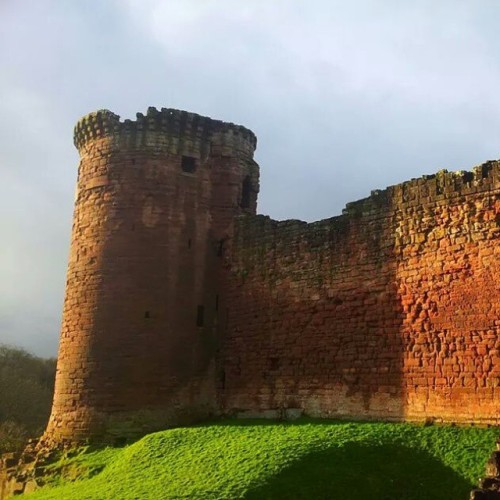‘We are not engaged in a war of ambition, or I should not have been here. Every man should be content to serve in that station in which he can be most useful. I have but one object in view…the success of the cause; and God can witness how cheerfully I would lay down my life to secure it’>
(Hugh Mercer, c.1775-7. In Goolrick 1906: 39; cf. Thomas 1837: 572-3)

1 [Image: Hugh Mercer statue, Fredericksburg, Virginia, by Justinandsarah]
I confess: I had never heard of the remarkable adventures of Brigadier-General Hugh Mercer, M.D. – Scots Culloden veteran, friend of George Washington, and 'forgotten hero’ of the American Revolution – before @LoveArchaeology Twitter led me to him. Apparently described as the 'bravest of the brave’ by his Revolutionary colleagues (Embrey 1937: 119), three biographies have been devoted to his life,yet the most recent dates from 1975, and his Wikipedia entry is headed by the foreboding ’needs additional citations for verification’. Even John Trumbull’s sketch of 'Hugh Mercer 'on Wikipedia is actually that of Mercer’s son, taken in April 1791 as a posthumous study for his father’s portrait.

2 [Image: Hugh Mercer entry, Wikipedia]
I wanted to know more, but time and logistical constraintsmeant that I had to rely on online sources. What could be achieved with this
methodology?
Madness in the Method
What follows is Hugh Mercer’s story, or, to be more accurate,
the one which can be found on the internet. It is an exercise in how tweets can
stimulate interest in history and the limitations of web-based down-the-rabbit-hole
research. (Or paraphrasing Wikipedia and
some fact-checking, whatever).
Conceived originally as a sort of Wikipedia+, with added
archaeology, I got drawn into questions concerning the veracity of some of the
legends that have accreted to Mercer. Denied physical biographies by lack of
access and my internet-only methodology – and relying on the sometimes un-footnoted
transcriptions of those biographies I had – it may have only served to muddy
already murky waters, but I hope it serves to reignite interest in my
subject.
Where available, hyperlinks serve as my footnotes, and I
have placed the archaeological background to sites associated with Mercer in
discrete sections marked by the Love Archaeology logo:
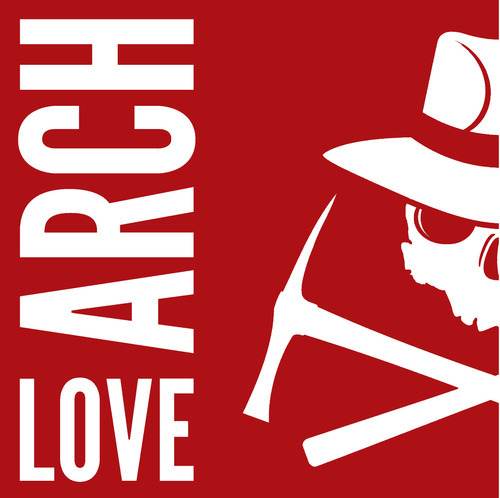
I now present a brief summary of Hugh Mercer’s adventures (in
case you want out early).
The Life of Hugh Mercer:
From Bonnie Prince Charlie to George Washington
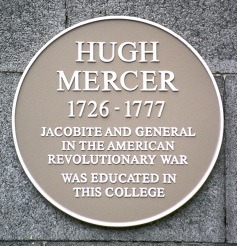
3 [Image: Hugh
Mercer plaque, Aberdeen, Aberdeen City Council]
All sources agree that Hugh Mercer was born to the Reverend
William Mercer and Ann Munro in the Scottish coastal parish of Pitsligo,
Aberdeenshire, in 1726. Mercer then took
a degree in the Arts in 1744 at Marischal College in Aberdeen, before going
on to qualify as a medical doctor by 1745/6.
Yet, on January 3, 1777, Mercer found himself an American Brigadier-General
of the Revolutionary Continental
Army. That day would end with him being horrifically
wounded in hand-to-hand combat at the Battle of Princeton,
New Jersey, by Regulars (i.e., British Army soldiers) who had mistaken him for
his close friend, George Washington. Although attended to by another American Founding
Father, Dr. Benjamin
Rush (who had also studied medicine in Scotland), Mercer died in agony nine
days later.
Ironically, Mercer had previously served heroically and to
great acclaim with British armed
forces in America during the French
and Indian War (1754-1761), the name given to the North American theatre of
the Seven Years’ War.
This worldwide conflict – effectively the first world war – pitted
the global empires of France and Britain against each other, often in alliances
with the other European powers and indigenous peoples of the lands they
claimed.
Mercer had arrived in the British colonies of North America
in 1747, working as a frontier medic in the dangerous and fluid borderlands of
western Pennsylvania that abutted Native American and French territories. His
desire for remoteness is likely explained by a simple fact: Mercer left Scotland
when he did because he was a Jacobite outlaw, on the run from the British Army
he had faced as a young surgeon’s assistant under Bonnie Prince Charlie at the
Battle of Culloden in April 1746.
Jacobite rebel, American frontier doctor, friend of Founding
Fathers, General, Revolutionary martyr – he was even the great-great-
great-grandfather of General George S. Patton – Mercer’s story deserves to
be rescued from relative obscurity, not least in his native
Scotland.
Use With Caution: An Internet Literature Review
Mercer was a fundamentally impressive figure, but we must
guard against the hero-worship which can over-burnish his legend. With this in
mind, we note that the internet – see Wikipedia’s
references – relies fairly heavily on an online transcription John T.
Goolrick’s 1906 book,
which has the snappy title:
'The life of General Hugh Mercer: with brief sketches of
General George Washington, John Paul Jones, General George Weedon, James Monroe
and Mrs. Mary Ball Washington, who were friends and associates of General
Mercer at Fredericksburg: also a sketch of Lodge no. 4, A.F. and A.M., of which
Generals Washington and Mercer were members: and a genealogical table of the
Mercer family’.
It is very much of its time, and has been equally praised
and criticized over the intervening years:
'John T. Goolrick, The
Life of General Hugh Mercer (N.Y. and
Washington, 1906) and Joseph M. Waterman, With Sword and Lancet: The Life
of General Hugh Mercer (Richmond, Va., 1941) contain some useful facts, but they are always uncritical, often
inaccurate, and must be used with caution’
As this quotation (Bell
1997: 448, n.1) suggests, Goolrick veers fairly uncritically toward
hagiography, but he seems, nevertheless, to use a wide range of primary
sources, many of which seem to check out. It must be noted, however, that I
point out where primary sources quoted elsewhere on the internet contradict
some of the more optimistic spin Goolrick applies to his (and our) hero.
I was unable to locate an Internet transcription of Waterman’s
'With Sword and Lancet’ (1941),
although a scathing 1942 review by H.E. Wildes can be read here. Wildes
criticized Waterman’s 'sketchy’ use of documents and 'paucity of material’,
adding that Goolrick’s book remained the best in the field:
'Scotch-born Hugh
Mercer, surgeon, veteran of Culloden and of Braddock’s expedition, hero of
Kittanning and of Trenton, promoter, land speculator and leader of inspiring
genius, deserves a real biography. His life was rich in incident and sparkling
with excitement; his personality was appealing and dynamic. Few would, however,
guess from this biography that Mercer merited his wide acclaim’ .
Thanks to Google Books, I have also had (partial) access to
some pages of Alvin T. Embrey’s ’History of Fredericksburg, Virginia’
(1937), which corresponds, at least in those parts I can access, to Goolrick.
Embrey had access – which can be independently
corroborated – to primary documents like Mercer’s Will, but was another
huge admirer of the Scot: his chapter on Mercer is subtitled ’The Bravest of the Brave’, a sobriquet
apparently bestowed upon him by his fellow American officers during the
Revolutionary War (although I cannot find any corroboration of this at the time
of writing).
Beyond a few tantalizing fragments, I have not been able to find
a transcription of Frederick English’s 1975
biography, ’General Hugh Mercer,
Forgotten Hero of the American Revolution’, but the book can be purchased
online. For what it’s worth, Mercer’s Wikipedia entry
did not list or reference it (at least, it wasn’t at the time of writing).
My own list of sources can be found at the end of this
article – Mercer appears several times in pen-portrait form in short chapters
that I could access via Google Books – but I must note here the excellence of
the late Whitfield J. Bell’s ’Patriot Improvers: 1743-1768’
(1997), the footnotes and quotations of contemporary letters of which
significantly enriched my account.
As would have been predicted, the internet is an amazing and
evolving resource, but is no substitute for being able to access primary
documents through the footnotes of books. What follows, then, is the Life of
Hugh Mercer for which the web-based evidence seems legit (and that’s all).
Scottish Rebel: Hugh the Jacobite
Battlefield Surgeon (1746)
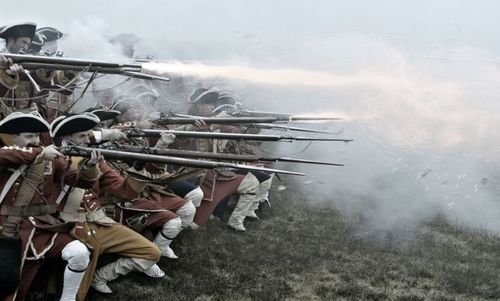
4 [Image: Culloden, NTS]
The literature is particularly sparse for Mercer’s formative
years in Scotland: indeed, none of the sources know very much about his life
before 1756 – I have seen few references to verifiable documents like parish
records, and one possible university reference – but his approximate date and
place of birth, names of parents, and his being at university between c.1740
and c.1744 are accepted by all.
At the age of 20, it seems that Mercer joined the Jacobite army
of the Bonnie Prince, Charles
Edward Stuart, as a surgeon’s assistant in the Jacobites’ attempt to depose
the Hanoverian monarchy and return the Stuarts to the British throne. However,
the Battle
of Culloden (April 16, 1746) – a crushing defeat for the Jacobites – was a
disaster for the young doctor, who eventually fled to Pennsylvania
in March 1747 after a year on the run in his native Aberdeenshire, possibly
by means of a ship sailing from Leith to Philadelphia. Ironically, however, his
experience of life in a brutal American frontier war would push him into the
arms of the Hanoverian armies and militias he had once opposed.
ARCHAEOLOGY: The Battle of Culloden

The best book on Culloden is Culloden:
The History and Archaeology of the Last Clan Battle by Glasgow
University’s Dr. Tony
Pollard (writes about the 'last pitched battle on British
soil’ here).
In terms of video, watch Dr. Pollard’s lecture: ’Old Wounds, New Perspectives: The
Archaeological Investigation of Culloden Battlefield’ for a short background
to the Jacobite risings and Culloden, given to Middle Tennessee State University on
September 11, 2013. Dr. Pollard (@DrTonyPollard)
also appears with Dan Snow (@thehistoryguy)
on this BBC film about
the archaeology of the Jacobite Rebellion.
If you are interested in studying conflict archaeology, Love
Archaeology’s alma mater, the
University of Glasgow hosts The
Centre for Battlefield Archaeology, directed by Dr. Pollard and Dr. Iain Banks.
You can visit the Culloden Battlefield, which is curated by the National Trust for Scotland, or learn more about the site at their dedicated website. Glasgow University also has a great page about its archaeology:
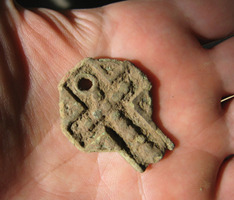
5 [Image: Archaeology of Culloden, University of Glasgow]
British Hero: America, War Again,
and Friendship with George Washington
The sources agree that Mercer practiced medicine for
approximately eight years (1747-1755) in a frontier settlement – given by
Goolrick (1906: 23) as Greencastle – in the Conococheague
Valley, western Pennsylvania. This area is to the east of what is now Mercersburg.
A plausible if unproven suggestion is that Mercer lived in
this liminal, border, area to avoid unwelcome recognition as a Scottish rebel
in the more populated east (Siry
2012). Shortly after Mercer left Scotland, George II issued ’An Act for the King’s most Gracious,
General, and Free Pardon’ (also ’Act
of Grace’) to (most) Jacobites, but it appears as if this required the
swearing of fealty to the Hanoverian monarch, so it may not have appealed to
the young exile. In any case, Siry (2012) suggests that Mercer heard of this in
1754 on the outbreak of the French and Indian War and 'he no longer had to fear
arrest’.
If not arrest, Mercer had war to fear: his location ensured
that he could not avoid the French
and Indian War (c.1754-61), which erupted over the disputed borders between
New Britain, New France, and those remaining Native American lands that the
French and British had yet to claim:
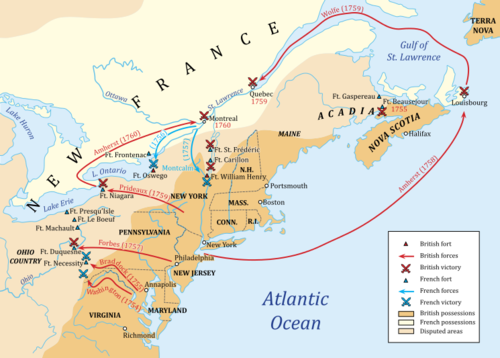
6 [Map: Wikicommons French and Indian War, Wikipedia, by Hoodinski]
Mercer and his Incredibly Confusing
French and Indian War History
Regarding Mercer’s service history in the French and Indian
War, this is the most accurate statement that can be made from my internet
methodology: Hugh Mercer was involved.
All sources agree on this. The actual details, outlined below, have been so
embroiled in legend and the repetition of rumor that George O. Seilhamer,
writing in 1905, wrote:
'It is surprising that
these fictions should have been repeated from their inception in 1824 to the
present time with almost unanimous approval, while no writer ever attempted to
ascertain the truth in regard to Mercer’s services in the French and Indian
War’.
1755, July
Event: General
Edward Braddock’s disastrous military
expedition against Fort Duquesne (modern Pittsburgh) and its French and
Native American defenders ends in Braddock’s death and a bloody rout.
Mercer: Seilhamer
(1905) suggests that, as no-one mentions him in contemporary documents, Mercer
was very likely not involved. Goolrick (1906) claims that Mercer was with
Braddock, was wounded, then had to trek alone back to his own lines. Wikipedia
doesn’t put Mercer with Braddock, but does have him coming to the aid of the
wounded who returned, joining up with British forces as a result of 'the same
butchery he remembered at Culloden’. Young
(2013) offers you your pick of the above, adding the suggestion that Mercer
went to the aid of the survivors at Fort Cumberland, 70 miles west of his home.
1756, March
Event: All agree
that Mercer was made a Captain of the Pennsylvania militia in March 1756.
Mercer: We are
safest when we take the following view from Seilhamer (1905) – ’That Dr. Mercer was active in promoting
measures for the protection of the Conococheague frontier in the autumn of 1755
and the winter of 1755-56 may be assumed, but we have no knowledge of his
movements until March 6, 1756, when he was commissioned a captain in the
service of the province of Pennsylvania. From that time until his removal to
Fredericksburg, Va., after the close of the French and Indian War…the sources
of information concerning him are ample and trustworthy’.
1756, September
Event: September
8, 1756, saw Lt. Col. John
Armstrong’s infamous
attack on the Native American Delaware village of Kittanning in western
Pennsylvania (40-miles NE of Fort Duquesne), as the colony tried to protect
itself from French forces by means of force projection in the aftermath of the
Braddock disaster. For more on the Kittanning Raid, read James P. Myers’ 1999 article.

6b [Image: Kittanning Path
Map, Myers 1999]
Mercer: Wikipedia
states that Mercer was wounded at Kittanning before enduring a 100-mile solo
trek back to his own lines. Goolrick (1906) places the trek before Kittanning,
although has Mercer being wounded in Armstrong’s expedition before being given
a silver memorial medal in recognition of his bravery by Philadelphia. Young
(2013) has Mercer being badly wounded, and that this was 'probably’ at
Kittanning. The ever-cynical Seilhamer
(1905) argued that, ’Captain Mercer
participated [at Kittanning] and was
wounded; that he was reported as carried off by his ensign and eleven men, who
left the main body in their return to take another road; and that upon the
return of the expedition to Fort Lyttleton he had not yet arrived’.
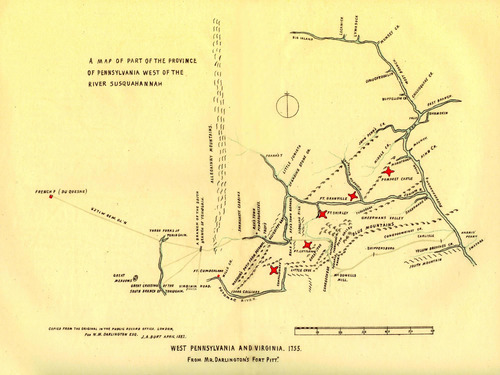
7a [Map: Forts
in Kittanning episode, Libraries PSU]
It seems almost certain that Mercer was involved in the
attack and was shot in the arm or wrist. Myers (1999: 411) talks about
Armstrong’s report of the Kittanning Raid – written on his return to Fort
Lyttleton September 14 – as mentioning that Mercer had been involved in a rear-action
and was reported missing.
Thanks to Brandon C. Downing’s article, ’The Kittanning Destroyed Medal’ (2012), $12
on JSTOR,
the frequent, unreferenced mentions of Mercer receiving a 'silver memorial
medal’ as a result of the Kittanning Raid now make sense: Armstrong and his
troops did receive a medal – the
first given for bravery in British North America – from the Corporation of
the City of Philadelphia. The impression, deliberate or otherwise, given by
most of Mercer’s biographers was that he alone received it for his epic trek
home. Sharp biographical practice aside, we are fortunate that some examples
can be found:
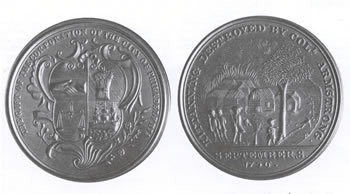
7b [Image: Kittanning
Destroyed Medal, Libraries PSU]
STOP PRESS: How The Internet Led Me to
Hugh and his Kittanning Medal
While finishing off this blog, I discovered an incredible
pdf in OMSA.
I then phoned – across the actual ocean – the wonderful Hugh
Mercer Apothecary Shop, a museum dedicated to his life within the business
Mercer established in Fredericksburg after the French and Indian war. This is
what I found out:
Presented to Mercer by Colonel Armstrong, who had been given
them by Mayor Shute of Philadelphia, Hugh’s medal remained in his family for
nearly 200 years. Then, on January 13, 1953, his great-great grandson, Hugh
Mercer Curtler, donated it to Fredericksburg’s City Council. The OMSA journal
then adds, 'Apparently, the medal was accompanied by a letter written by
Colonel Hugh Mercer in January, 1835, which reads:
'Medal to
Gen Mercer, by the City of Philadelphia
'This highly
valued medal, in memory of my venerated father, was presented to him by the
Corporation of the City of Philadelphia for his bravery and good conduct as
Captain of Infantry in the destruction of Kittanning, an Indian Settlement in
the Colony of Pennsylvania, under Colo Armstrong in Sept 1756, soon after my
father came from Scotland in early life.
’We were
then British Colonies, and those Campaigns (commonly called Braddock’s War in
1755-'56, when Washington too commenced his military career) were between the
Colony of Pennsylvania and the French and Indians – Kittanning was near
Pittsburg, now one of the most flourishing cities in the U. States - the French
had a fort there, called Du Quesne - afterwards Fort Pitt.
’Jan'y 1835
– H. Mercer’.
It was incredibly exciting to phone Genevieve
Bugay, manager of Mercer’s Apothecary, to have it confirmed that they have it
in their museum. Violent in its depiction, it is very much of its time:

7c [Image: Mercer’s
Kittanning Medal, HMAP]
(I know: it’s an awesome piece of history and material culture).
If we have cleared up the mystery of his medal, what
remains uncertain is how Mercer got back from Kittanning, given that he might
have got one just for participating, and not necessarily for an epic solo trek. Armstrong’s contemporary report
listing as Mercer being missing does at least suggest that it may have occurred
(Myer 1999: 411). Here goes:
Dried Clams and Snake Supper:
The Legend of a 100-mile Trek
The story goes that, separated from his men at Kittanning, Mercer
trekked alone for 14 days and 100 miles
before reaching safety. The following is widely reported on the Internet as
being from the Pennsylvania
Gazette dating to September 23
or 30, 1756:
'We hear that Captain
Mercer was 14 Days in getting to Fort Littleton. He had a miraculous Escape,
living ten Days on two dried Clams and a Rattle Snake, with the Assistance of a
few Berries. The Snake kept sweet for several Days, and, coming near Fort
Shirley, he found a Piece of dry Beef, which our People had lost, and on Trial
rejected it, because the Snake was better. His wounded Arm is in a good Way,
tho’ it could be but badly drest, and a Bone broken’.
We know from Myers (1999: 417, n. 2) that there certainly
were reports in the Gazette about
Kittanning on September 23 and 30, but the online
archives are behind a paywall, so I couldn’t check them.
I want to believe: because if the Gazette entry is accurate, but embellished, it shows mythologizing
happening in Mercer’s own lifetime, which would be awesome. (Thanks to M.R. Wood
for this point).
The Forbes Expedition and Revenge at
Fort Duquesne (1758)
Snake-eater or no, it is evident that Mercer impressed his
peers and the wider public in 1756/7, being promoted to the rank of Major on
December 4, 1757 (See Pennsylvania Archives,
Bell
1997: 449) and put in command of all Pennsylvania troops west of
Susquehanna (Goolrick 1906: 28; Bell 1997: 449).
1758 saw the tide turn for the British as William
Pitt (the Elder) became Secretary of State in the Newcastle/Pitt
Ministry (c.1757-1762) and more resources were sent to fight the French and
their allies (Siry 2012). This strategy can be seen in the Forbes
Expedition to capture Fort Duquesne (this being the third British attempt)
at the Forks of the Ohio River.
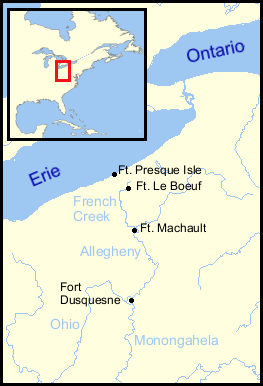
7d [Image: Fort Duquesne, Wiki: “French
Forts 1754” by Thomas Cool]
Brigadier-General John
Forbes was another of those Scottish doctors-turned-soldier in America –
they seem to be everywhere, as this 2009 book
by Roger L. Emerson demonstrates – but his own health ensured that effective
leadership of the expedition fell to Henry Bouquet. George
Washington, hero
of Braddock’s disaster, commanded a contingent of Virginians.
The main body of 6,000 men – 2,000 mainly Highland Scottish
Regulars with the remainder militias from Virginia and Pennsylvania – advanced
excruciatingly slowly toward Fort Duquesne along the road they had to build
through the wilderness (Washington bitterly disagreed with this, preferring to
follow the route he took with Braddock in 1755). By mid-September, the British
were close enough to send out the Highlanders for a reconnaissance mission, but
it was crushed
when it tried to storm the fort itself, with Wikipedia reporting that the
Scots’ heads and kilts were displayed on Duquesne’s walls.
Another disaster involved Mercer and Washington. On November
12, Forbes sent both men to ward off a French night sally/sortie, but their
split forces ended up firing on each other in the darkness. 35 men died, but
the French raid was their last hurrah: with a 10th of the men and
low on supplies, the French burnt Fort Duquesne on the night of November 24,
1758, and fled; the British entered the next day.
Mercer’s
good work here over the following months would build both a firm basis for the
future Pittsburgh, but also for his later career in the Revolutionary Continental
Army.
How Hugh Helped Build Pittsburgh
Mercer was entrusted to build the temporary precursor to Fort
Pitt, known in contemporary maps as 'Mercer’s Fort’, in what would become
Pittsburgh. This stabilized British control over the Ohio Country, disputes
over which had sparked off the French and Indian War. Concerning Mercer’s
capabilities for such an important role, Jeffrey
Amherst, overall British commander in North America, wrote to Bouquet: 'I am very sensible of his zeal and
attachment to the King’s Service and his judgment and alacrity in executing
whatever may tend to the honor of his Majesty’s Arms’ (Siry 2012; after
Waterman 1941: 56).
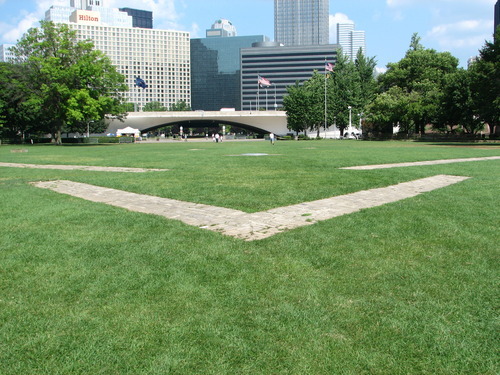
8 [Image: Fort Duquesne, Pittsburgh, Dr. Jen Novotny]
In charge of 200 men, Mercer’s eight-months’ work at the
fort – which he apparently
described as 'huddled up in a very hasty manner’ – involved 'building a saw
mill’ and 'trying to make tar’, along with planting vegetable gardens, offering
medical advice, and preparing for the expected French counter attacks (Bell
1997: 449). Life at Fort Mercer was nothing if not varied.
Fun Facts: a Fort
Mercer – named after Hugh’s
construction – features in the 2010 Rockstar video game Red Dead Redemption
(see below). The name Fort Mercer also reappeared in the Revolutionary War in
the guise of a 1777 fortification
on the Delaware River, named in his honor.
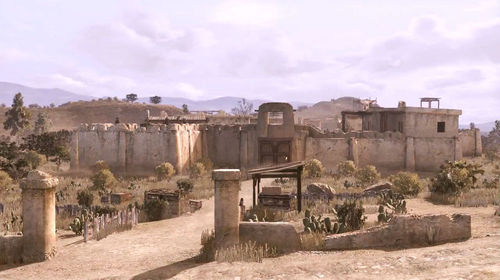
8a [Image: Red Dead Redemption’s 'Fort
Mercer’, RedDead.Wikia]
Promoted to Colonel on April 23, 1759 – the year in which
Britain turned the tide in this global war – Mercer revealed a comic side
when it was proposed to send some of his garrison home for recuperation:
'My Opinion as to
their going to the Settlement you shall have all the freedom in life: I never
knew any other Advantage accruing to Soldiers, I mean ours, from being in Towns
on the frontier, than black eyes, Claps, & eternal flogging; and unless
Carlisle & Shippensbg are of late miraculously altered in point of Morals,
the old game at either of those seats of Virtue and good manners would
undoubtedly be play’d over; especially as it is intended the men should receive
their Pay there, to enable them, more & more, besides having their pockets
pick’d by Tavern keepers’ (Bell 1997: 449, Shippen Papers IV, 39 (HSP)).
That’s fairly top-end lolz for 1759, and it worked: his soldiers
stay’d put (Bell 1997: 449, + refs.).
ARCHAEOLOGY: The French and Indian War
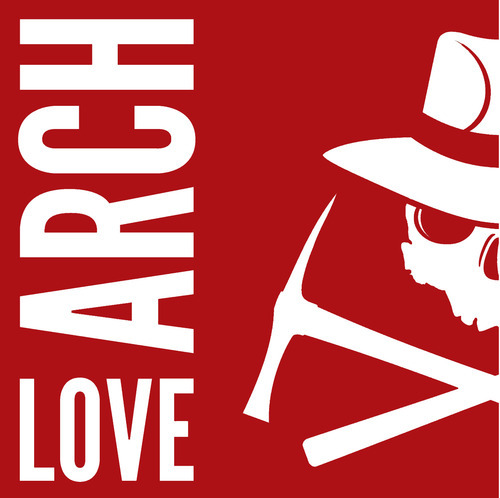
There are some truly superb pieces of material culture
associated with the war in this online chapter
of 'The Backcountry War’, from ’Clash of
Empires: The British, French, and Indian War, 1754-1763’, including
Mercer’s Kittanning medal featured above.
Braddock Expedition:
The National Park Service has more on General Braddock's Road and his Grave (including the initial, hasty, pit dug on the orders of George Washington, who then got the fleeing British soldiers to trample over it so that the French wouldn’t notice the disturbed earth and dig it up).
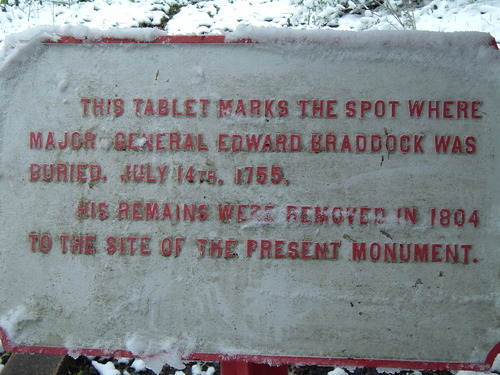
9 [Images: Braddock’s Original Grave, Dr. Jen Novotny]
Kittanning Raid: Beyond
the 'Kittanning Destroyed Medal’ seen above, parts of the Frankstown-Kittanning
Path used by Armstrong and Mercer can still be found (Myers 1999: 406)
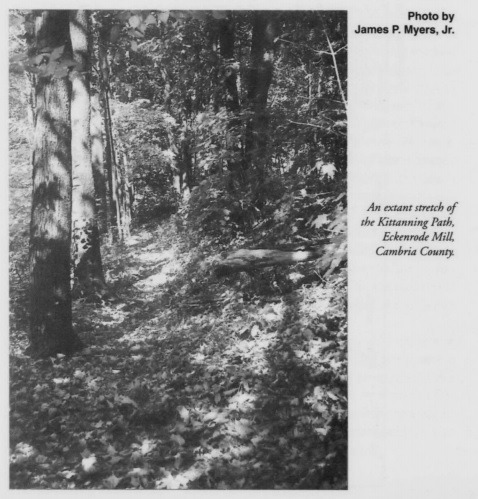
10 [Images: Kittanning Path archaeology, Myers 1999: 406]
In terms of material culture, Armstrong’s very, very cool hand-drawn map of
Ki style=“text-align: center;"ttanning survives (Myers 1999: 409).
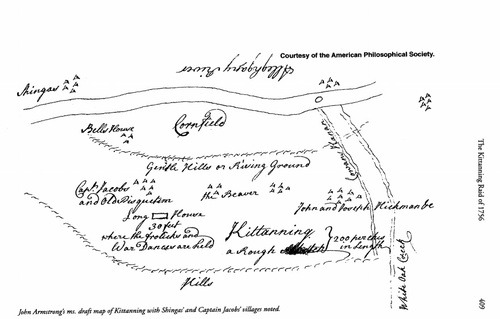
11 [Images: Armstrong’s hand-drawn
map, Myers 1999 + acknowledgements]
Fort Pitt: The
'lower remnants’ of the rampart walls built when Mercer was in command (under
General John Stanwix) have been excavated:
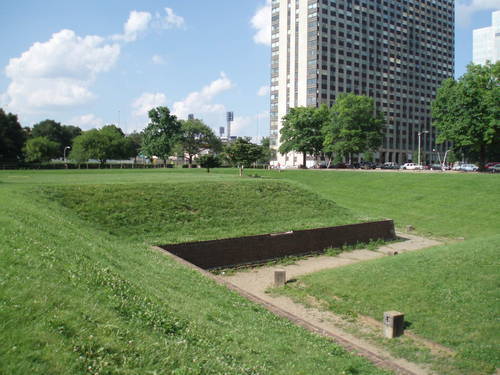
12 [Images: Fort Pitt Trench 3, Dr. Jen Novotny]
More generally, recent work has been done on The Archaeology of French and Indian
War Frontier Forts (Babits & Gundulla 2013), like at Fort Edwards, West Virginia.
The French and Indian War:
Sparkplug of Global Conflict and American Revolution
The French and Indian War was a key event in the countdown
to the American Revolution. As the US
Department of State notes: 'The war provided Great Britain enormous
territorial gains in North America, but disputes over subsequent frontier
policy and paying the war’s expenses led to colonial discontent, and ultimately
to the American revolution’.
Washington’s War?
See here
for more on George Washington’s critical involvement in the earliest actions of
the French and Indian War in the 1754 engagements at Jumonville Glen
and Fort
Necessity.
When Hugh met George (Washington)…
…is something that no-one on the Internet knows. Given the
lack of information over Mercer’s whereabouts in the period 1755 to March 1756,
it is difficult to say. Here, Goolrick (1906: 28-9) notes:
’Whether Hugh Mercer [first] met George Washington at Braddock’s defeat [1755], or at the headquarters of the Forbes
expedition against Fort Duquesne [1758],
there seems to be some conflict of opinion and statement among his biographers.
The time and place of that meeting is of no very material moment. One thing
seems to be absolutely certain, that they did meet, and an attachment sprang up
between them which lasted as long as Mercer lived. And, further, that as a
result of that meeting and that attachment, on the advice and at the suggestion
of Washington, Virginia became the home of Hugh Mercer, and the State of
Pennsylvania lost him as a citizen’.
Years later, during the Revolution, Washington also seems to
have supported Mercer’s advancement within the Continental Army (Goolrick 1906:
31; Embrey 1937: 121). This was after a long friendship forged in
Fredericksburg, Virginia, where Mercer moved in 1761.
General Practice in Virginia, 1761-1775:
Medicine, Masons, and Ferry Farm
Mercer was discharged on January 15, 1761, which reflected
the ending of effective French offensive capacity throughout North America and
the demobilization (or transfer to other Seven Years’ War theatres) of many
soldiers. Having befriended many Virginians, Mercer followed Washington to
Virginia.
On February 12 (Bell 1997: 449-450), he wrote to Henry
Bouquet, his CO on the Forbes Expedition:
'…all Prospect from
the Pensylva Service failing, I determin’d upon applying myself to the Practise
of Physick, and this Place was recommended as likely to afford a genteel
subsistance in that Way. Whether it will answer my expectation, I cannot yet
judge; but from the reception I met with the Gentlemen from here, have reason
to imagine it worthy a few months’
trial’.
The yearning he felt for military service did not
immediately wane. Hearing that a permanent army might be raised, Mercer took a
break from the medical practice and apothecary business he was establishing to
write Bouquet again (Bell 1997: 450, from Papers
of Henry Bouquet).
’I might again appear
in a Military Capacity; For I must own I would prefer something genteel in that
Way, to the drudgery of Business. Is there any likelihood of such a Measure
taking Place?’.
Unfortunately for Mercer, there wasn’t, and he would remain
in Fredericksburg until 1775. In his work, he was successful, treating George
Washington’s younger brother Charles, his mother Mary (see below), and his
step-daughter Patsy Custis. This information can be found in Bell (1997: 450),
who had access to Mercer’s account book covering the period 1771-5. Mercer had
literally hundreds (some 300+) of families on his books in the early 1770s,
entered into medical partnerships with fellow doctors, and had some of his
correspondence on medical matters to John Morgan
– who, like Benjamin Rush, had studied medicine in Edinburgh – read to the
American Philosophical Society.
Outside of work, Mercer joined the still
extant Masonic Lodge, No. 4, alongside George Washington and – amazingly –
as many as five other future generals of the American Revolution. The Lodge lists them as Washington, Mercer, George Weedon, William Woodford, Fielding Lewis, Thomas Posey, and Gustavus
Wallace. See here
for MountVernon.org’s article on Washington, Mercer, and Freemasonry.
Mercer was also involved in St. George’s Episcopal Church,
and managed a 'lottery to raise £450 for a new church and organ’ (Bell 1997:
450, from the Virginia Gazette, July
14, 1768). At an unknown date, Mercer married
George Weedon’s sister-in-law, Isabella Gordon, daughter of John, the local
tavern-owner (Goolrick 1906: 105-6; Bell 1997: 450). They would have five
children, and Mercer may have been trying to secure their inheritance when he
maintained his claim to western land grants given as a reward for military
service in the French and Indian War (Bell 1997: 450, + Mercer 1773
correspondence refs.).
While practicing medicine in the midst of what was a
very Scottish community in which Scots-born 'Father of the US Navy’ John
Paul Jones lived for a time, Mercer purchased Ferry Farm – George
Washington’s boyhood home – where a famous cherry tree
may (or may not) have once stood. In paying £2000 for this property in 1774, Mercer proved that
his business interests – beyond medicine, he also owned a ferry service – were
profitable, and he felt confident (Goolrick 1906: 38; Bell 1997: 451 + refs).
ARCHAEOLOGY: Ferry Farm
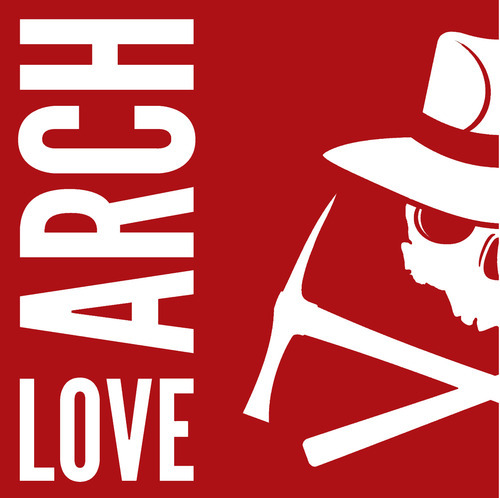
Facing Fredericksburg on the opposite bank of the
Rappahannock River, George would have called Ferry Farm home from 1738 until he
inherited Mount Vernon in 1754. As with Washington’s Mount Vernon estate (see here
and/or below), there is a lot of cool archaeological work being done with Ferry
Farm, like the field
school and 3D-scanning
project.
We now know that the house inhabited by the Washingtons was
a wooden structure covered in clapboards, with chimneys at either end of its
1.5 storeys. Evidence of the small Christmas Eve fire of 1740 – burnt charcoal
and plaster – was also discovered, as were the kitchens and slave quarters.
Thousands of C18th artifacts were unearthed, including this pipe with Masonic
stamp:

13 [Image: Ferry Farm Masonic pipe, GWF]
Read more about the archaeology
of Ferry Farm on the George Washington Foundation (GWF) website. MountVernon.org have a page
of their digital encyclopedia devoted to the farm. Please note that the GWF
are holding Archaeology Day on February 16, 2015.

14 [Image: Ferry Farm excavations, GWF]
When Good Neighbors Become Good Friends:
Mercer and the Washington Family
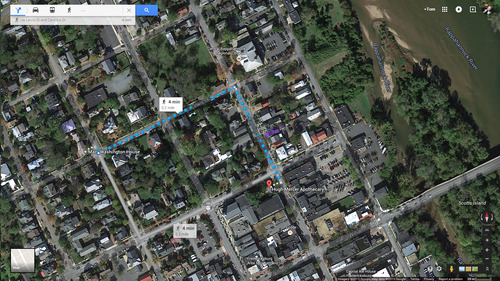
14b [Image: Mary
Washington journey to Mercer’s Apothecary, Google]
As a physician, Mercer had regular contact with Washington’s
mother, Mary. Embrey (1937: 122) notes that Mercer’s account book, which had been
at the Clerk’s Office in Fredericksburg for many years, contained several
entries pertaining to 'Madam Washington’. One source
claims that Mercer treated Mary for the pain of the breast cancer by giving her
a 'mild opiate’ on a daily basis. We have a
letter from another Fredericksburg medic, Elisha Hall, to his cousin (Benjamin
Rush) asking for advice on Mary’s treatment. Some other sources for Mary, who
lived around the corner from Mercer’s apothecary (see above) in a house
which still stands, have been collated by Paula S. Felder here,
and there is a fascinating website devoted to
her life.
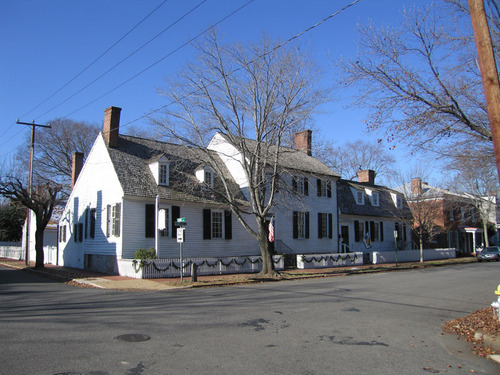
15 [Image: Mary
Washington House, Preservation Virginia]
Embrey (1937: 124) also tells us that George Washington
managed his and Mary’s landholdings on the Rappahannock River from a desk he
maintained in Mercer’s apothecary. Visits seemed to have been reciprocal, and
Goolrick (1906: 32) adds that Mercer 'occasionally paid a visit to the future
"Father of the Country” at Mount Vernon’, an estate and house that still
exists:
ARCHAEOLOGY: Mount Vernon, Va.

Mount Vernon has a superb website, and has much on Washington’s
involvement in actions in which we know that Mercer
was involved. The website also has a world-class archaeology
section – which doesn’t shy away from the archaeology
of slavery – that you could easily lose hours navigating.
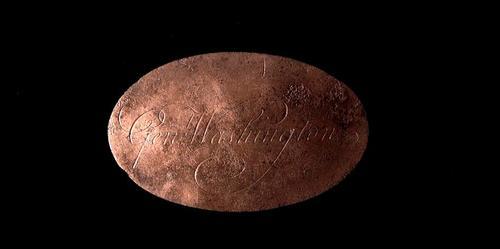
16 [Image: Washington's trunk plate, Mount Vernon]
The above image – of a copper trunk plate inscribed 'Gen:
Washington’ – is from Mount Vernon’s South
Grove Midden excavations. The midden was the main repository for the
Washington family’s domestic trash in the decades prior to the Revolution (esp
c.1735-1765). There is a dedicated midden
website containing object biographies of the trunk plate,
and a 2013 Popular Archaeology article.
Fun Fact: Washington’s
next-door neighbor for a period was Scot George Buchanan (d. 1762), a
Glaswegian merchant who named his Glaswegian property 'Mount
Vernon’ due to the fact that his Virginian estate bordered that of the
Washington family. The area retains the name to this day.
What was Hugh Mercer actually like?
I have found two sources – Goolrick (1906: 31) and Embrey
(1937: 121) – who quote Englishman Dr. J.F.D. Smythe’s 1784 recollection of
visiting Mercer before the war broke out:
'I arrived in Fredericksburg and put up
at an inn kept by one [George] Weedon, who is now a general officer in the American Army, and who was then very
active and zealous in blowing the flames of sedition. In Fredericksburg, I
called upon a worthy and intimate friend, Dr. Hugh Mercer, a physician of great
eminence and merit, and, as a man, possessed of almost every virtue and
accomplishment. Dr. Mercer was afterwards Brigadier-General in the American
Army, to accept of which appointment I have reason to believe he was greatly
influenced by General Washington, with whom he had been long in intimacy and
bonds of friendship. For Dr. Mercer was generally of a just and moderate way of
thinking and possessed of liberal sentiments and a generosity of principle very
uncommon among those with whom he embarked’.
It is a picture of a pleasant person, and one which
corroborates evidence for his relaxed nature and sense of humor notable in the correspondence from his period in charge of Mercer’s Fort, as quoted above.
Archaeology: Dr. Mercer in Fredericksburg (1761-1775)

Wonderfully, a quick Google – other Internet search engines
are available – will find you Washington Heritage Museums’ preserved
doctor’s surgery, where Dr. Mercer practiced medicine in his c. 1771/2 apothecary:
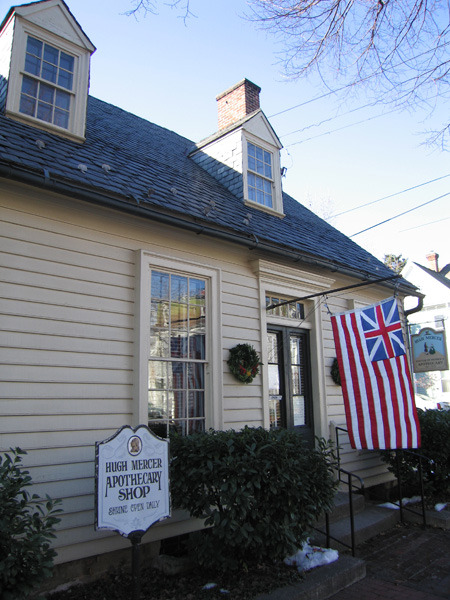
17 [Image: Apothecary exterior, Preservation
Virginia]
In terms of material culture, the Hugh Mercer Apothecary
Shop contains Mercer’s 'Kittanning Destroyed’ medal, described above. Discussing
the (1920s) restoration of the apothecary by the Citizen’s Guild of Fredericksburg,
Embrey (1937: 122) notes that 'the shelves and drawers were found intact, the
fronts of some of the drawers bearing labels in Dr. Mercer’s own handwriting’.
Embrey includes a letter written by the restoration architect,
Edward W. Donn, Jr. (dated August 20, 1928), in which he describes his standing
building survey and its archaeology:
’The excavations about
the site brought to light some relics of old bottles , very much oxidized, an
old drilling foil and several other articles...’.
Revolution! American Patriot: Gunpowder and Plot
Mercer’s loyalty to the British Army – and it could be
argued that it was only born out of necessity in the French and Indian War and
a love of adventure – proved a one-off: In 1775, he joined Fredericksburg groups
that shared military intelligence with their fellow Revolutionaries, being part
of an assembly that wrote to Washington, alarmed at the news that Scot Lord
Dunmore (see below), the very-soon-to-be-last Royal Governor of Virginia, had,
at night on April 20/1 begun removing the gunpowder
from the Williamsburg Magazine. Bell (1997: 451) has Mercer offering to lead
men to Williamsburg.
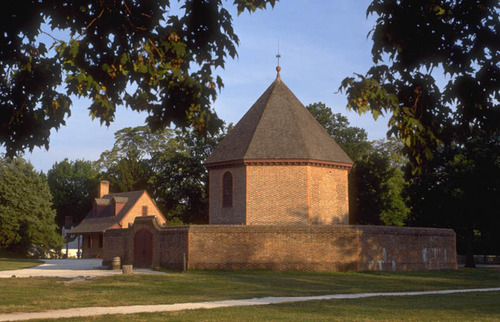
18 [Image: Williamsburg
Magazine, Colonial Williamsburg Foundation]
Goolrick (1906: 33) quotes a letter dated April 25 – saying
that it was written by Mercer, although it may have been a group effort – which
explains why they did not march on Williamsburg:
’We are not sufficiently supplied with powder ; it may be proper to
request of the gentlemen who join us from Fairfax and Prince William to come
provided with an over-proportion of that article’.
On April 30, Goolrick (1906: 34) reports that Alexander
Spotswood confirmed to Washington the decision of the Fredericksburg militia to
stay:
’I am extremely glad to inform you
that after a long debate it was agreed that we should not march to
Williamsburg’.
You can learn more details about the incident here. This practice
of emptying magazines in areas of dubious loyalty to the British Crown had led to
Battles
of Lexington and Concord, where the first firefights of the Revolution
occurred on April 19, i.e., the day before Williamsburg’s 'Gunpowder Incident’
[See the 'shot
heard around the world’].
ARCHAEOLOGY: Colonial Williamsburg
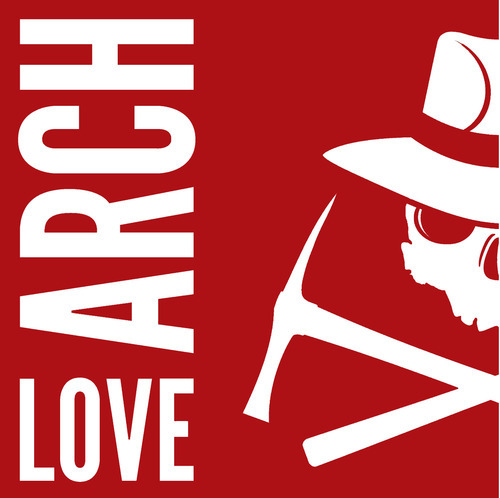
If you can’t visit Colonial Williamsburg, you can still visit
its amazing website. Beyond the wonderful
podcasts and videos, not to
mention educational
materials, it has pages devoted to
archaeology, where
to find it on site, and a kids’
archaeological page to boot. The CW Foundation looks at colonial
archaeology and material culture, involving urbanization, community development,
zooarchaeological method, GIS, and archaeobotanical research. Annual field-schools
are undertaken with the College of William and Mary.
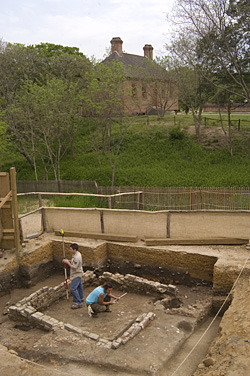
19 [Image: Colonial Williamsburg,
CWF]
Rivalry! 1775, Patrick Henry, and the Lack of Trust in Scots-American Loyalists
In August, 1775, Wikipedia notes that Mercer was prevented
from leading the Virginian regiments – there were three of 1,000 men each –
because he was a 'Northern Briton’. Here, Goolrick (1906: 39-41) expands: It
had been decided that the commander of the 1st Regiment would be the
commander-in-chief. When it came to the vote, Patrick Henry of
'Give me Liberty, or give me Death!’ fame was elected over Mercer, despite the
fact that only the latter had (extensive) military experience (Selby 2007: 50).
Goolrick (1906: 40) suggests that there were some doubts over Mercer’s American
loyalties as he had not been born in the colonies (to be fair, Lord Dunmore was
a case in point). It should be pointed out here, however, that, like Mercer,
Henry’s father was from Aberdeenshire in Scotland.
Here, John E. Selby (2007: 50) adds the important note that
many Revolutionaries were suspicious about Scots as many Scottish-born
colonists were Loyalists. Articles in Wikipedia about Loyalists,
Loyalists
Fighting in the American Revolution, Toryism, and United Empire
Loyalists provide more background, and Arthur Herman’s 'How
the Scots Invented the Modern World’ contrasts the popularity of Loyalism
amongst Scottish-born Americans with strong Patriotism amongst the Scots-Irish.
In any case, Washington was aghast at the thought of Henry’s
lack of military experience: Selby
(2007: 50) quotes his response – ’I think
my countrymen made a capital mistake, when they took Henry out of the senate to
place him in the field; and pity it is, that he does not see this, and remove
any difficulty by a voluntary resignation’. The negative reaction to
Henry’s appointment led to Mercer removing himself from the election for the
colonelcy of the 2nd Regiment (Selby 2007: 50; cf. Thomas
1837: 572-3).
In any case, Mercer was elected as Colonel to the Minute Men – so called
because, in theory, they could be ready for battle within 60 seconds – of four
Virginian counties. Goolrick (1906: 33) quotes the order:
’Election of officers
of minutemen and regulars for Caroline, Spotsylvania, King George and Stafford
counties, Virginia, September 12, 1775. At a meeting of the select committee
for the district of this county, the counties of Caroline, Stafford, King
George and Spotsylvania, the following officers were elected: Minutemen Hugh
Mercer, Colonel…’.
Promotion: Colonelcy of 3rd Virginia Regiment, January 10, 1776
On January 10, 1776, Mercer was appointed the first
commander of the 3rd Virginia Regiment (Bell 1997: 451), which the
Virginia Convention had previously decided not to fund (Selby 2007: 51),
presumably after the fiasco of the elections of the leaderships of the 1st
and 2nd Regiments. Goolrick (1906: 39) quotes Mercer as having
offered his service to the Virginia Convention with the promise that he would ’serve his adopted country and the cause of
Liberty in any rank or station to which he may be assigned’. Goolrick
(1906: 41) also includes the minutes from the Virginia Convention:
’Wednesday, January
10, 1776, Convention proceeded by ballot to the appointment of a Colonel of the
Third Regiment, and there was a majority of the whole Convention in favor of
Hugh Mercer. Resolved, therefore, that the said Hugh Mercer be appointed
Colonel of the Third Regiment’.
Spotsylvania county’s Committee
of Safety – described by Wikipedia as a type of 'shadow government’ set up
by the Americans (and normally in control of the militias) – responded to
Mercer’s promotion with the following statement, as recorded by Goolrick (1906:
41-2):
’The committee of the
county, to express their approbation of the appointment of Col. Mercer, and to
pay a tribute justly due to the noble and patriotic conduct which that
gentleman has uniformly pursued since the commencement of our disputes with the
Mother Country, which was so strikingly displayed on that occasion, entered
into the following resolve: Resolved, That the thanks of this committee be
presented to Colonel Hugh Mercer, Commander-in-Chief of the Battalion of Minute
Men in the District of this County, and the counties of Caroline, Stafford, and
King George ; expressing the high sense of the importance of his appointment to
that station, and our acknowledgements of his public spirit in sacrificing his
private interest to the service of his Country. ALEXANDER DICK, Clerk.’
This website
lists his service with the 3rd Regiment as being from February 12,
1776, to June 5, 1776.
Mutiny!
Mercer’s first job on taking command of the 3rd
Regiment was to deal with the mutinous behavior of a group of soldiers amidst the
generally chaotic background of the resignation of Henry due to the removal of
overall command from his position as Colonel of the 1st Regiment
(Selby 2007: 88-9).
Whereas Goolrick (1906: 44-5) suggests that Mercer quelled
the mutiny with a firm, but calm, reprimand, Selby (2007: 89) – whose account
is well-footnoted
with Virginia Gazette references
(2007: 350) – suggests that Mercer’s rebuke was met with the mutineers’ threat
of calling a court of enquiry, and that Mercer 'had to apologize publically to
the company. He meant nothing personal, he assured them’. This disparity –
compare Goolrick (1906: 44-5) with Selby (2007: 89, 350) – drives home the
point that Goolrick, being a cheerleader for Mercer, can ignore facts that
challenge his hero narrative.
Promotion Again: JOHN HANCOCK and General Mercer, June 5, 1776
Mercer was appointed to the Continental Army as a Brigadier-General
by the Continental Congress on June 5, 1776. The order (Goolrick 1906: 46) from George Washington was
sent by John
Hancock:
'President of Congress
to General Mercer, Philadelphia, June 6, 1776. Sir: I am directed by Congress
to inform you that they yesterday appointed you a Brigadier-General in the
armies of the United Colonies, and that they request you will immediately on
receipt hereof set out for headquarters at New York; for which purpose I am
commanded to forward you this by express. Should you take Philadelphia in your
way, I must beg you will do me the favor to call at my house, as it is highly
probable I shall have something in charge from Congress ready for you at that
time.
I do myself the pleasure
to enclose your commission; and have the honor to be, sir,
Your most obedient and
very humble servant,

Goolrick (1906: 46-7) includes Mercer’s reply (note the
reference to our old friend, Lord Dunmore) -
'Williamsburg, June
15, 1776.
Sir: I had the honor
yesterday to receive your letter of the 6th inst., together with a commission,
appointing me a Brigadier-General in the army of the United Colonies. Give me
leave, sir, to request of you to present to the honorable Congress my most
grateful acknowledgements in this distinguished mark of their respect.
I was on duty with
part of my regiment before Gwinns Island, where Lord Dunmore has taken
possession, when your instructions reached me; in consequence of this I shall
use my utmost diligence, after settling the accounts of my regiment, to wait on
you in Philadelphia, I have the honor to be, sir,
Your most obedient,
humble servant,
HUGH MERCER’.
Lord Dunmore and Hugh Mercer:
From Culloden Allies to Virginia Foes

21 [Image: Lord Dunmore, CWF & Va.
Historical Society]
Remarkably, John Murray (Lord Dunmore)
– whom we met above trying to empty the Williamsburg Magazine the year before –
had, at the age of 15, accompanied his father on campaign with Bonnie Prince
Charlie, serving as Charlie’s page boy. Imprisoned after the Battle of Culloden
(his father was sent to the Tower of London), Dunmore received a partial pardon
in 1650 and joined the British Army. Like Mercer, Dunmore moved to America,
settling at first in Virginia, before eventually becoming Royal Governor on
September 25, 1771.
Quite the coincidence, then, that Dunmore’s base on Gwynn’s
Island was besieged by his former ally. In July, 1776, the month after Mercer’s
letter, Dunmore was dislodged from the island by General Andrew
Lewis, never to return. He was the last Royal Governor of Virginia.
'Times That Try Souls’: Crisis of the Revolution, 1776
For the American’s ill-fated New York
and New Jersey Campaign, Washington appointed Mercer commander of the 'Flying
Camp/Army’ in July, 1776. This unit was a strategic reserve designed to protect
New Jersey while Washington’s Continentals defended New York (Kwasny 1998: 57).
More details on Mercer’s movements and interactions
with Washington can be found in Google Books in Mark V. Kwasny’s ’Washington’s
Partisan War, 1775-1783’. Kwasny (1998: 63) informs us that Mercer convinced (the already naturally aggressive)
Washington to look to take the initiative against the Regulars whenever
possible, although this was problematic during a period when the Americans were
on the back foot. That said, we do know that Mercer led a diversionary raid
against Staten Island on October 15 with c.600 militia and Continentals,
capturing 20 prisoners in the action (Kwasny 1998: 81-2).
Mercer and the Rise and Fall of Fort Lee, NJ
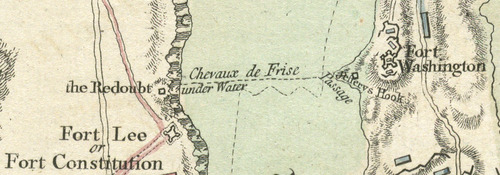
22 [Image: Hudson, Forts Washington and Lee, Library of Congress]
Mercer’s troops constructed Fort Lee, New Jersey, on the
opposite bank of the Hudson River to Washington’s Fort Washington in a bid to
deny passage to the Royal Navy. We can only assume that Washington remembered
his friend’s success with Fort Mercer in the French and Indian War. Fort Lee - read more about its inauspicious name here - was ill-starred and short-lived, however: in a disastrous period for the
Americans, which had seen the Regulars take New York City in September, Fort
Washington fell on November 16, 1776, in the aftermath of the American defeat
at the Battle of
White Plains on October 28. Four days after the fall
of Fort Washington, the (now abandoned) Fort Lee was taken by the British:

23a [Image: Battle
of Fort Washington, by Oneam]
It was at this critical juncture that Thomas Paine, on the
retreat with Mercer and Washington, began his 'American Crisis’
series, the first of which opens with the line:
’These are the times
that try men’s souls. The summer soldier and the sunshine patriot will, in this
crisis, shrink from the service of their country; but he that stands by it now,
deserves the love and thanks of man and woman’.
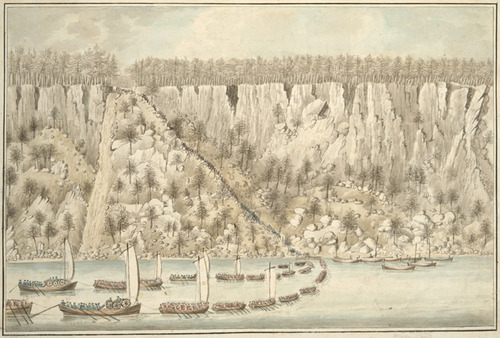
23b [Image: Regulars scale The Palisades toward Fort Lee, NY Pub. Lib.]
The Icy Delaware River: Washington and Mercer, December 25/6, 1776
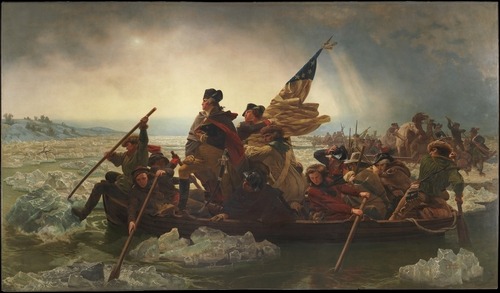
24 [Image: Washington crossing the
Delaware, Met
Museum]
However you look at it, Mercer was connected in time and
often place to many of the great figures of the American Revolution. Most
importantly, however, Mercer was particularly close to Washington, being actively
involved in the plan
to cross the icy Delaware River – perhaps making the original suggestion – in
order to surprise isolated Hessian soldiers
(British mercenaries) at Trenton, New Jersey (where battles were fought on December 26 and January 2,
1777). The idea that Mercer came up with the Delaware plan is stated in
Goolrick (1906: 49) as being reported by Mercer’s aide-de-camp.
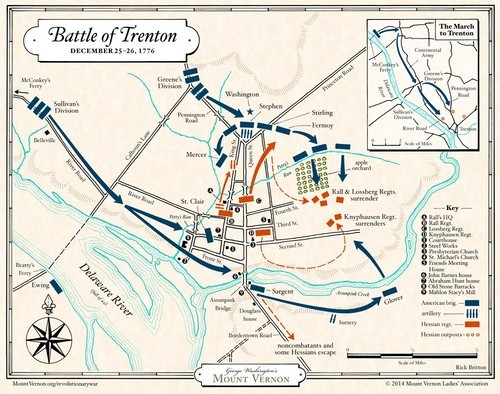
25 [Map: First
Battle of Trenton, Mount Vernon]
Whoever had the idea, the surprise amphibious attack on
Trenton was a total success, at least temporarily turning the tide of the war
in the Americans’ favor. A fully-referenced account of this battle can be found
here
at MountVernon.org.
Damn Rebel! The Battle of Princeton,
January 3, 1777
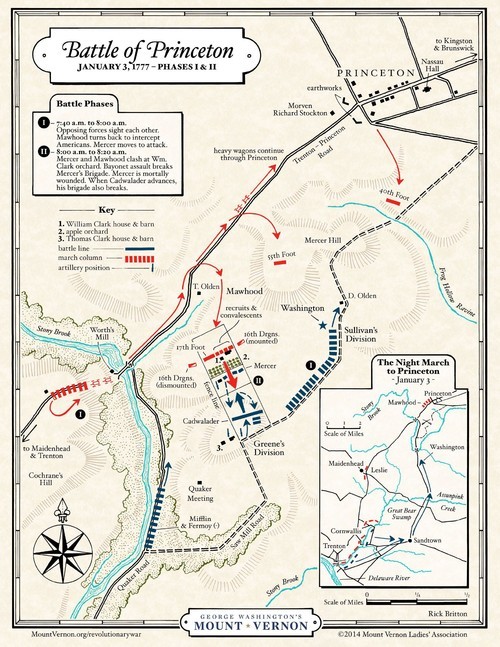
26a [Map: Battle of Princeton, MountVernon.org]
On January 3, the day after the second Trenton battle (also
known as Assunpink
Creek), Mercer led one of Washington’s wings on the approach to Princeton
in a bold attempt to capture the town and threaten the rear of Lt. General Charles
Cornwallis’ army.
Read more here
about the importance of American military intelligence in the lead-up to the Battle
of Princeton, and in particular the wonderful 'Spy
Map’ researched by militia Colonel John Cadwalader and given to Washington
on New Year’s Eve. This amazingly detailed map gave the Americans a highly
accurate bird’s-eye-view of the area and a huge tactical advantage on the day:

26b [Map:
Cadwalader’s Plan of Princeton, Dec. 31, 1776, Library of Congress]
As with the Crossing of the Delaware, it seems that there
was some scholarly
debate in the past as to whether Mercer suggested this daring plan, but I
am no wiser to modern views on this. In any case, Kwasny (1998: 103-4) adds the
detail that Mercer commanded c.350 veteran troops with the task of taking
control of the main bridge to the south of Princeton.
As Mercer’s detachment entered the Clarke Farm orchard on
Princeton’s southern outskirts, Mercer’s vanguard encountered 276 Regulars –
whose numbers included Mercer’s fellow Scot,
Captain William Leslie – commanded by Lt. Colonel Charles Mawhood. Where
Leslie was killed instantly by a musket ball through the heart, Mercer was
fated for worse: his horse shot from under him and separated from his troops,
the Regulars – who thought he was Washington – demanded his surrender with the
words:
'Surrender, you damn rebel!’
Refusing, and advancing with his saber drawn, Mercer was
clubbed and bayoneted, being left for dead with seven bayonet wounds.
One legend has it that Mercer refused to be taken
immediately from the fray, and asked to be propped up against what would become
known as the Mercer Oak,
but this is likely
untrue, although the tree was there at the battle and only died in 2000
(with scions and a sapling grown from one of the original tree’s acorns now at
the site). What is certain is that
Mercer was taken with the wounded of both sides to the Thomas
Clarke House (see below) at the eastern end of the battlefield, where he
died 9 days later on January 12, despite the efforts of Dr. Benjamin Rush.
The
Americans won at Princeton, but losing Mercer and other important men was,
nevertheless, a major blow.
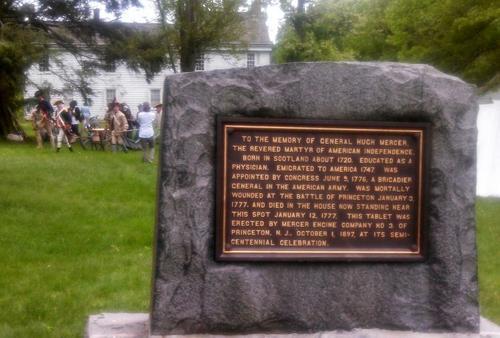
27a [Image: Memorial to Hugh Mercer
with Thomas Clarke House, Roy Edwards]
Pro Patria Mori? Dr. Rush and the Deaths of General Mercer and Captain Leslie
In the aftermath of Mercer’s horrific death, his
corpse was put on public display in Philadelphia 'where it was exhibited as
evidence of British savagery’ (Bell 1997: 451, as witnessed by Jacob Mordecai).
American anger was also stoked by witness accounts like that
of Dr. Jonathan
Potts, who reported in a letter dated January 5 that the Regulars robbed
the mortally wounded Mercer, 'even to taking the cravat from his neck,
insulting him all the time’ (Bell 1997: 451, letter in Continental Congress Papers).

27b [Image: Death of General Mercer,
Yale
Art Gallery]
In the final coincidences of what was, if I may be allowed
to say, a particularly Scottish battle, Potts had studied for his M.D. in
Edinburgh with Rush,
the Founding Father who, while in Scotland (1766-8), had befriended the
aforementioned William Leslie, the Scottish Captain being painted at the moment
of death by Trumbull on the right of The
Death of General Mercer. In this painting, Rush is advancing towards the
stricken Mercer while Leslie falls; in the middle, Washington rides in on his
horse (all being a-chronological, of course: Washington arrived later after
rallying the troops who had turned back).
Touchingly,
Rush would ensure that Leslie got a fine burial: this blog and Wikipedia entry (both footnoted) describe how the 26-year-old Scot’s body was recovered from
the battlefield. Originally put on a British wagon, the wagon was in turn
captured by the Americans. While treating Mercer and others in the Thomas
Clarke House, Rush – who may have previously given Leslie a letter asking any American captors to parole him to Rush’s house in Philadelphia – heard
of the discovery, and asked Washington to bury Leslie at an appropriate spot on
the Americans’ subsequent march to Morristown. Thus, in the village of
Pluckemin, NJ, a young British soldier was buried with full honors in a funeral
attended by Rush and Generals Thomas Miffin, John Sullivan Henry Knox, and
George Washington. Rush paid for a headstone after the war and, although the
original was replaced, the grave marker still bears the legend:
In Memory of the Hon.ble Capt.n WILL.M LESLIE, Of the 17th British Regiment, Son of the Earl of Leven in Scotland. He fell Jan.y 3.d 1777 Aged 26 Years at the battle of Princeton. His friend Benj.n Rush M.D. of Philadelphia hath caused this Stone to be erected as a mark of his esteem for his WORTH and of his respect for his noble family
A worthy digression, but we end, though, with Hugh Mercer.
Rush recalled years later that Mercer had said to him two days prior to the
Battle of Princeton that he ’would never
submit to lose my liberty. Sooner than bow my neck to the Yoke, I will cross
the mountains, & incorporate myself with the Indians. I will live & die
a freeman’. In a sad addendum, Bell (1997: 451, n. 19) notes that Rush
wrote this recollection on the back of a letter dated April 25, 1803, sent to
him from Hugh’s son, Hugh Jr.
After Trumbull’s paintings, another idealized version of
Mercer’s death is depicted (below) on the Princeton Battle Monument (1922), which is, in its drama, nevertheless a
fitting memorial to this forgotten hero of Scotland and of a United States he
did not live to see:

28 [Image: Battle of Princeton Monument, Kara Kozikowski]
Archaeology and Art: American Victory at Princeton
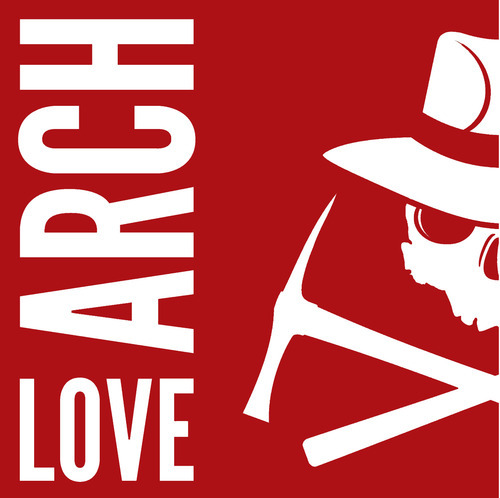
The Internet is replete with accounts of what happened
after the fighting at the Clarke Farm (e.g., MountVernon.org’s 10
Facts about the Battle of Princeton), but for our purposes, it is
sufficient to note that Washington rallied the troops and went on to take
Princeton. This famous 1784 painting of Washington by Charles Willson Peale (a
Scots-American who fought with the militia at Princeton) shows the fatally wounded
Mercer lying at his feet:

29 [Image: 'George Washington
at the Battle of Princeton, January 3, 1777’ (1784) painting, Princeton]
Click on the following hyperlinks to find more information
on the Thomas
Clarke House and the Princeton Battlefield.
A pdf from the Princeton Battlefield Trust about efforts to preserve the house
and the battlefield can be downloaded here.
You can also watch The Civil War Trust’s
'Campaign
1776’ video of the same aim: http://vimeo.com/111135230.
Marked 'College’ on the Cadwalader map, this building is
Princeton’s Nassau Hall, which was held by c.200 British Regulars when
Washington’s forces moved north after Mercer’s fatal skirmish. It can be seen
in the background of the Peale portrait. The damaged caused by the short
American siege which ended the battle can still be seen:
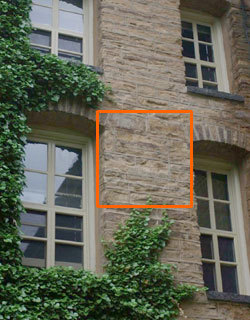
31 [Image: Nassau
Hall battle damage, Princeton]
Hugh Mercer: Burial(s) and Legacy
We know that Mercer speculated on lands in the west,
something confirmed by his holdings at his death. Embrey (1937: 122) reports Mercer’s
Will – dated March 20, 1776 – was 'probated in the Court House at
Spotsylvania, and is recorded in Will Book E, page 169’. Embrey’s work on
compiling the grantor index for the City of Fredericksburg can be accessed at
this searchable
webpage.
Mercer’s Will saw 2000 acres of land in Kentucky given to
his son William, and another to his 2000 acre package to his son George. His
son John got 3000 acres on the Ohio River, and his daughter Ann 1000 acres on
the Ohio River and another 1000 on the Miami River. A posthumous child was
given 2000 acres of Kentucky land, which was part of 5000 acres given to Hugh
by the Commonwealth of Virginia. Ann, William, John, and George also received
land in Stafford County opposite Fredericksburg on the Rappahannock River that
Hugh Mercer had bought 'from General George Washington’.
Originally buried in Christ Church Burial Ground in
Philadelphia (in a funeral supposedly attended by some 30,000 mourners),
Mercer’s remains were transferred within the city to his current place of rest
in Laurel Hill Cemetery in 1840 by Philadelphia’s Saint Andrew’s Society, who
have the sword Hugh Mercer raised toward the Regulars as he was cut down. Shown
below, it was presented to the society in 1841, Mercer joined it in 1757, by
the granddaughter of the Continental Army’s Surgeon-General, Dr. John Morgan
(who, like everyone else at the battle, also studied medicine at Edinburgh in
the 1660s). Morgan received
it from Mercer at Princeton:
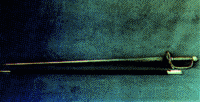
32 [Image: Hugh Mercer’s Princeton
sword, St Andrews’s Society]
There remains nothing left for me to say about the
remarkable Hugh Mercer, except leave you with the words written
in 1777 by Congress and, finally, erected with his Fredericksburg statue in
1902:
Sacred to the memory of HUGH MERCER, Brigadier-general in the Army of The United States. He died on the 12th of January, 1777,
of the Wounds he received on the 3rd of the same month, near Princetown, in New Jersey, Bravely defending the Liberties of America. The Congress of the United States, In testimony of his Virtues, and their Gratitude, Have caused this Monument to be Erected’
Internet Sources (at least, the ones I remembered to note down)
The
life of General Hugh Mercer: with brief sketches of General George
Washington, John Paul Jones, General George Weedon, James Monroe and Mrs. Mary
Ball Washington, who were friends and associates of General Mercer at
Fredericksburg: also a sketch of Lodge no. 4, A.F. and A.M., of which Generals
Washington and Mercer were members: and a genealogical table of the Mercer
family, by John T. Goolrick (1906)
History of
Fredericksburg: The History of an Old Town, by John T. Goolrick (1902)
The
Kittochtinny Magazine: A tentative record of local history and genealogy
west of the Susquehanna. v. 1, Jan.-Oct. 1905. Chambersburg, Pa.: G.O.
Seilhamer (1905)
Patriot-improvers:
1743-1768, by Whitfield Jenks Bell (1997)
Liberty’s
Fallen Generals: Leadership and Sacrifice in the American War of
Independence (Military Profiles) Steven E. Siry (2012)
The Glory of America: Comprising
Memoirs of the Lives and Glorious Exploits of Some of the Distinguished
Officers Engaged in the Late War With Great Britain, by R. Thomas (1837)
Essays
on David Hume, Medical Men and the Scottish Enlightenment: Industry,
Knowledge and Humanity (Science, Technology and Culture, 1700-1945), by Roger
L. Emerson (2009)
http://news.google.com/newspapers?nid=1298&dat=20020524&id=B_EyAAAAIBAJ&sjid=pggGAAAAIBAJ&pg=4358,7312492
(Goolrick’s grandson’s article)
Washington’s
Partisan War, 1775-1783 By Mark Vincent Kwasny (1998)
The
American Generals, John Frost 'Hugh Mercer’ (2012)
https://archive.org/stream/pottersamericanm03lossuoft#page/484/mode/2up
http://www.swordforum.com/forums/showthread.php?5913-A-real-Scottish-American-Hero
http://www.mountvernon.org/george-washington/the-revolutionary-war/ten-facts-about-the-revolutionary-war/10-facts-about-the-battle-of-princeton/#TodayInHistory
https://blogs.princeton.edu/graphicarts/2011/06/the_death_of_mercer_at_the_bat.html
http://www.clanmunro.org.uk/hughmercer.htm
http://pabook.libraries.psu.edu/palitmap/bios/Mercer__Hugh.html
http://www.history.com/this-day-in-history/hugh-mercer-dies-from-wounds-received-in-battle-of-princeton
http://militaryhistory.about.com/od/army/p/mercer.htm
http://militaryhistory.about.com/od/battleswars16011800/p/monogahela.htm
http://www.nps.gov/fone/braddock.htm
http://www.revolutionarynj.org/revolutionary-neighbor/bios/hugh-mercer.pdf
https://history.state.gov/milestones/1750-1775/french-indian-war
Princeton Battle Field - http://www.state.nj.us/dep/parksandforests/parks/princeton.html
Thomas Clarke House - http://www.visitprincetonbattlefield.org/visit-princeton-battlefield/clarke-house-history/
http://www.revolutionarynj.org/revolutionary-neighbor/bios/hugh-mercer.pdf
The
Revolution in Virginia, 1775-1783, John E. Selby (2007)
Biographical Monographs
English, Frederick. General
Hugh Mercer, Forgotten Hero of the American Revolution. New York: Vantage, 1975
Goolrick, John T. The
Life of General Hugh Mercer. New York: Neale, 1906.
Waterman, Joseph M. With
Sword and Lancet: The Life of General Hugh Mercer. Richmond: Garrett &
Massie, 1941.
Acknowledgements and Thanks
Thanks to Roy
Edwards, Kara Kozikowski, and my friend
and colleague Dr. Jen Novotny
for kindly allowing me to use their photographs and for their encouragement. I
also had a lovely phone call with Genevieve Bugary at Hugh Mercer’s Apothecary
Shop.
M.R. Wood, Dr. Elizabeth Pierce, Dr. Ryan K. McNutt , Dr.
Terence Christian, and my mother Marjory Horne were the brave souls who
proof-read the text.
Thanks also to Dr. Adrian Maldonado and Christy McNutt for technical **advice **on formATTing.
As they say, all remaining errors and omissions are the
result of my small brain.
Comments and Corrections
Please write to me, Dr. Tom J. Horne, via lovearchaeologymagazine@gmail.com
(If you get this far, you’re my hero. Thank you)

